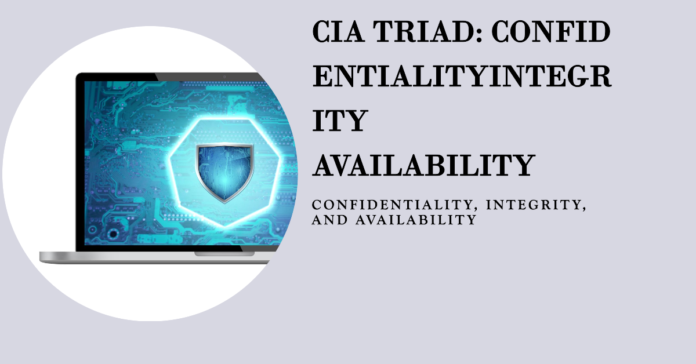In the ever-changing field of cybersecurity, “CIA” doesn’t refer to a government spy agency. Instead, it means Confidentiality, Integrity, and Availability – the three core values of information security. These are also called the CIA Triad. By following this model, companies can protect their systems and important data from being seen or changed by anyone who should not have access to them; as well as preventing any interruptions that would be harmful.
The Three Pillars of the CIA Triad
Confidentiality: Shielding Information from Prying Eyes
Data confidentiality is like keeping your valuables in a safe that only a few people can open. It makes sure that only authorized persons can get sensitive details. This part of the triad aims to stop unauthorized release of private or business data. For instance, if a hacker breaks into a firm’s customer list, they have violated confidentiality. Various steps are used by institutions to strengthen this leg including:
- Defining and enforcing clear access levels: Not everyone in an organization needs access to every piece of data.
- Harnessing the power of encryption: Encryption transforms data into an unreadable format, making it useless to unauthorized individuals even if they gain access.
- Implementing multi-factor authentication (MFA) or two-factor authentication (2FA): This adds an extra layer of security by requiring users to provide multiple forms of verification, such as a password and a one-time code sent to their phone.
Integrity: Preserving the Sanctity of Data
Integrity revolves around the trustworthiness and accuracy of data. It’s about ensuring that information remains unaltered and complete, free from any unauthorized modifications. Think of a financial report that’s been tampered with, leading to poor business decisions – a direct consequence of compromised data integrity. To uphold this pillar, organizations focus on:
- Implementing robust access controls: Limiting who can make changes to data ensures its accuracy.
- Employing version control systems: These systems track changes made to files and databases, allowing for easy recovery of previous versions in case of unauthorized alterations.
- Utilizing checksums and digital signatures: These cryptographic tools verify the authenticity and integrity of data, ensuring it hasn’t been tampered with during transmission or storage.
Availability: Ensuring Uninterrupted Access to Critical Data
Availability is the lifeline of any organization reliant on data. It guarantees that information and systems are accessible to authorized users whenever they need them. Imagine a company’s website crashing during a major product launch – a classic example of compromised availability. To strengthen this pillar, organizations rely on:
- Redundancy: Having backup systems in place ensures that operations can continue even if one system fails.
- Failover systems: These systems automatically switch to a backup system in case of a primary system failure, minimizing downtime.
- RAID (Redundant Array of Independent Disks) systems: RAID technology distributes data across multiple disks, providing fault tolerance and improving data availability.
The CIA Triad in Action: Real-World Applications and Benefits
The CIA Triad is not just a theoretical framework; it’s a practical blueprint for building secure systems. For instance, a healthcare provider storing sensitive patient data would leverage the CIA Triad by:
- Confidentiality: Encrypting patient records and implementing strict access controls to comply with HIPAA regulations.
- Integrity: Using digital signatures for electronic prescriptions to prevent fraudulent alterations.
- Availability: Implementing redundant servers and backup power systems to ensure uninterrupted access to critical patient information during emergencies.
By adhering to the principles of the CIA Triad, organizations can:
- Make informed business decisions based on trustworthy data.
- Meet regulatory compliance requirements and avoid costly penalties.
- Safeguard their reputation and maintain customer trust.
- Minimize the risk of human error and malicious attacks.
Evolving Beyond the Triad: Addressing Modern Security Challenges
Even though the CIA Triad continues to be a basic element in the field of cybersecurity, the world of the Internet keeps changing all the time. Recent threats like complex social engineering assaults and widespread use of the Internet of things gadgets have prompted a wider application of safety measures.
One such evolution is the Parkerian Hexad, which adds three more principles to the CIA Triad:
- Possession or Control: Protecting physical devices and systems from unauthorized access.
- Authenticity: Verifying the identity of users and the origin of data.
- Utility: Ensuring that data retains its usefulness and relevance.
Organizations need to adapt their security strategies to address these emerging challenges, but the CIA Triad remains a vital foundation for building a robust security posture.
Conclusion
The CIA Triad is not just an acronym; it is a basic principle of successful cyber security. By knowing and applying its concepts, companies can protect themselves in a world full of data, and reduce the dangers caused by constantly changing cyber attacks. As technology progresses even further the ‘confidentiality, integrity availability’ triad and its related models will be important for showing what needs to be done to have a safe digital world.


